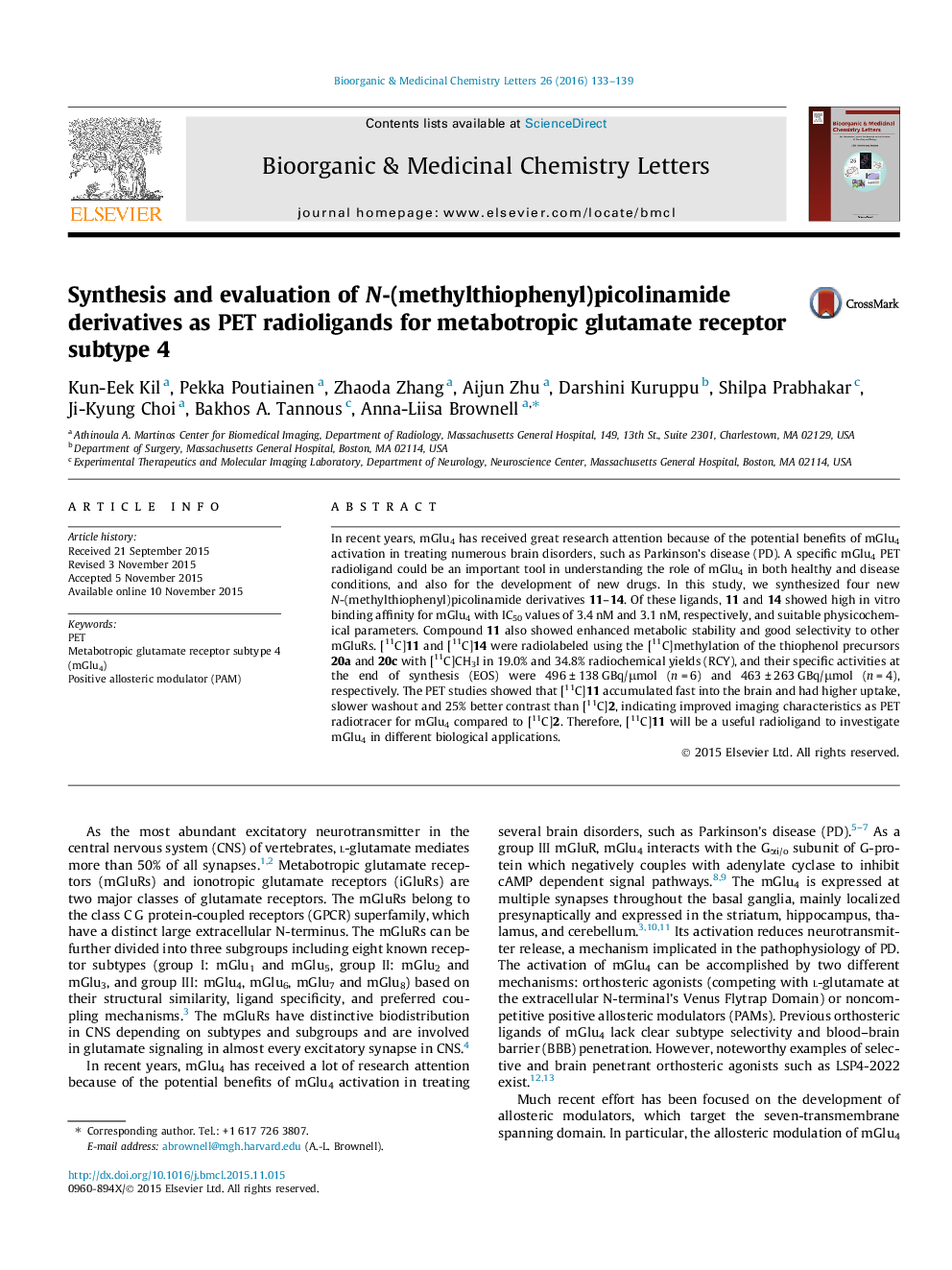| Article ID | Journal | Published Year | Pages | File Type |
|---|---|---|---|---|
| 1368803 | Bioorganic & Medicinal Chemistry Letters | 2016 | 7 Pages |
In recent years, mGlu4 has received great research attention because of the potential benefits of mGlu4 activation in treating numerous brain disorders, such as Parkinson’s disease (PD). A specific mGlu4 PET radioligand could be an important tool in understanding the role of mGlu4 in both healthy and disease conditions, and also for the development of new drugs. In this study, we synthesized four new N-(methylthiophenyl)picolinamide derivatives 11–14. Of these ligands, 11 and 14 showed high in vitro binding affinity for mGlu4 with IC50 values of 3.4 nM and 3.1 nM, respectively, and suitable physicochemical parameters. Compound 11 also showed enhanced metabolic stability and good selectivity to other mGluRs. [11C]11 and [11C]14 were radiolabeled using the [11C]methylation of the thiophenol precursors 20a and 20c with [11C]CH3I in 19.0% and 34.8% radiochemical yields (RCY), and their specific activities at the end of synthesis (EOS) were 496 ± 138 GBq/μmol (n = 6) and 463 ± 263 GBq/μmol (n = 4), respectively. The PET studies showed that [11C]11 accumulated fast into the brain and had higher uptake, slower washout and 25% better contrast than [11C]2, indicating improved imaging characteristics as PET radiotracer for mGlu4 compared to [11C]2. Therefore, [11C]11 will be a useful radioligand to investigate mGlu4 in different biological applications.
Graphical abstractFigure optionsDownload full-size imageDownload as PowerPoint slide
